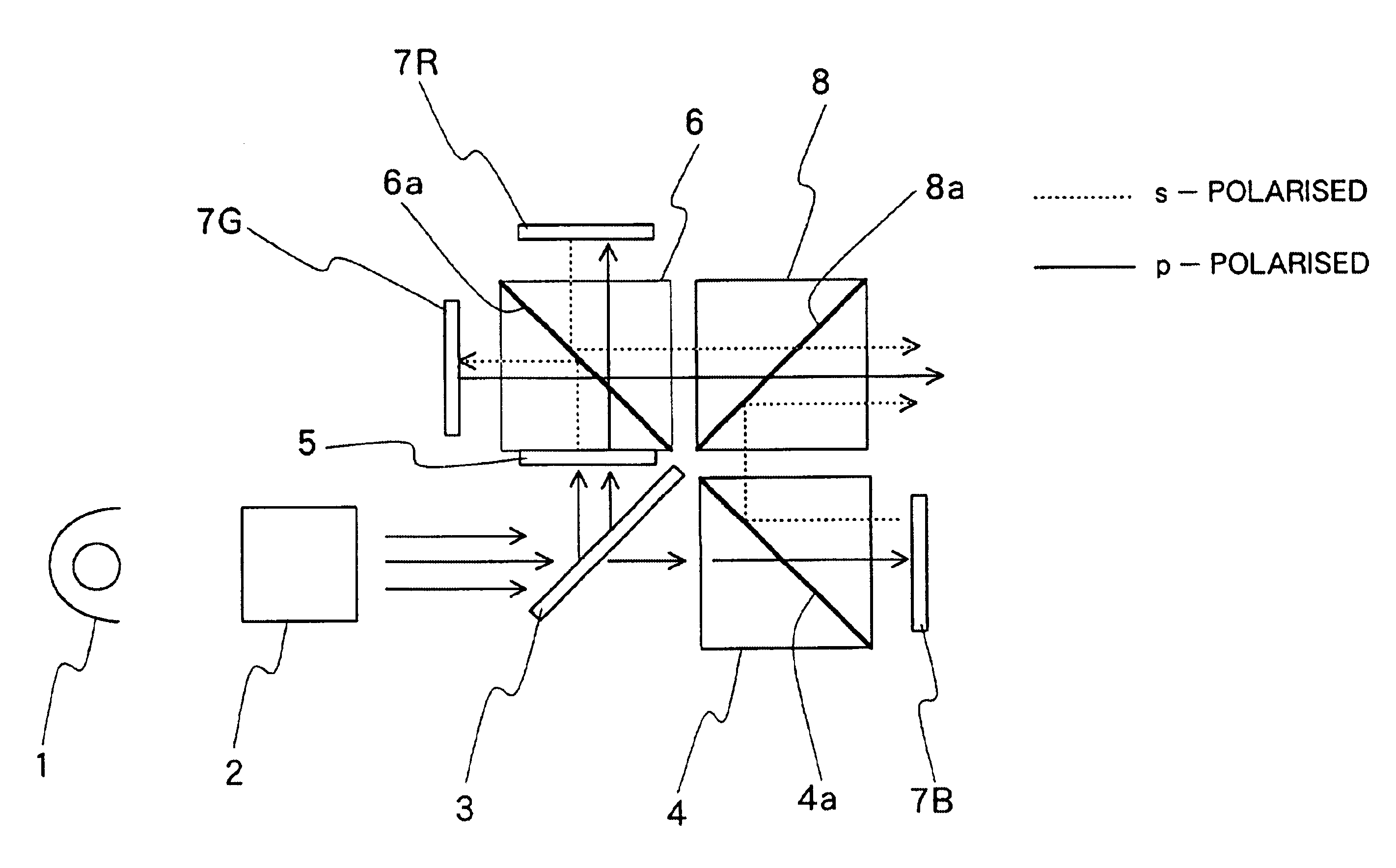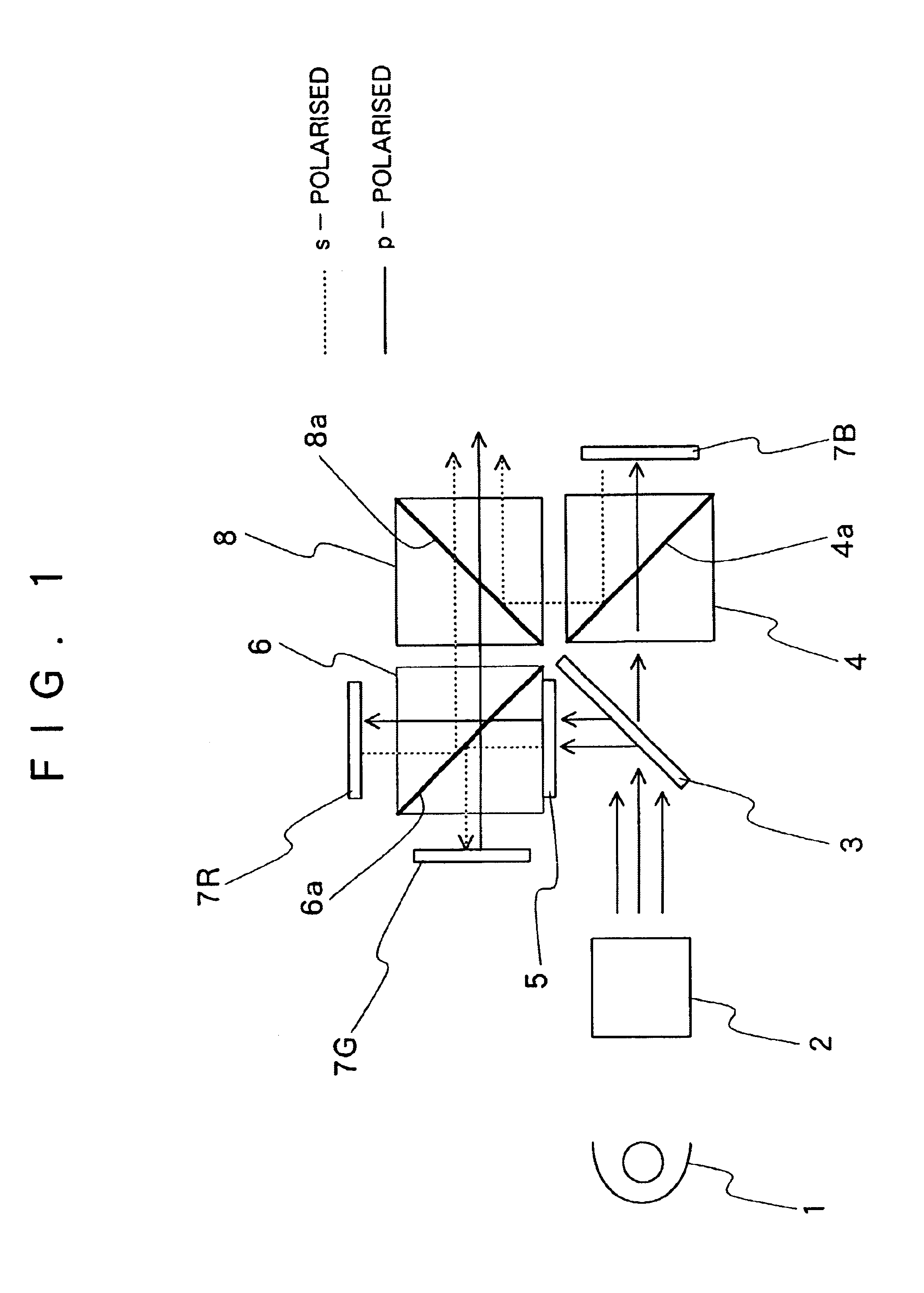Reflection type liquid crystal projector
a liquid crystal projector and projector technology, applied in the direction of picture reproducers using projection devices, polarising elements, instruments, etc., can solve the problems of image light output efficiency degradation, high cost as optical elements, and high cost of whole optical systems
- Summary
- Abstract
- Description
- Claims
- Application Information
AI Technical Summary
Benefits of technology
Problems solved by technology
Method used
Image
Examples
Embodiment Construction
[0032]Referring to FIG. 1, there is shown a first embodiment of the present invention, in which indicated at 1 is a white light source and at 2 a polarization converting means, which constitutes an illuminating light source section along with the white light source 1. The polarization converting means 2 functions to regulate the plane of polarization of illuminating light rays from the white light source 1. In the case of the particular embodiment shown, illuminating light is regulated into p-polarized light by the polarization converting means 2.
[0033]Indicated at 3 is a dichroic mirror to which illuminating light is fed in the first place. This dichroic mirror 3 serves to separate a first illuminating light component or a blue wavelength component (hereinafter referred to simply as “B component” for brevity) from a second illuminating light component or a green wavelength component (hereinafter referred to simply as “G component” for brevity) and a third illuminating light compone...
PUM
 Login to View More
Login to View More Abstract
Description
Claims
Application Information
 Login to View More
Login to View More - R&D
- Intellectual Property
- Life Sciences
- Materials
- Tech Scout
- Unparalleled Data Quality
- Higher Quality Content
- 60% Fewer Hallucinations
Browse by: Latest US Patents, China's latest patents, Technical Efficacy Thesaurus, Application Domain, Technology Topic, Popular Technical Reports.
© 2025 PatSnap. All rights reserved.Legal|Privacy policy|Modern Slavery Act Transparency Statement|Sitemap|About US| Contact US: help@patsnap.com



